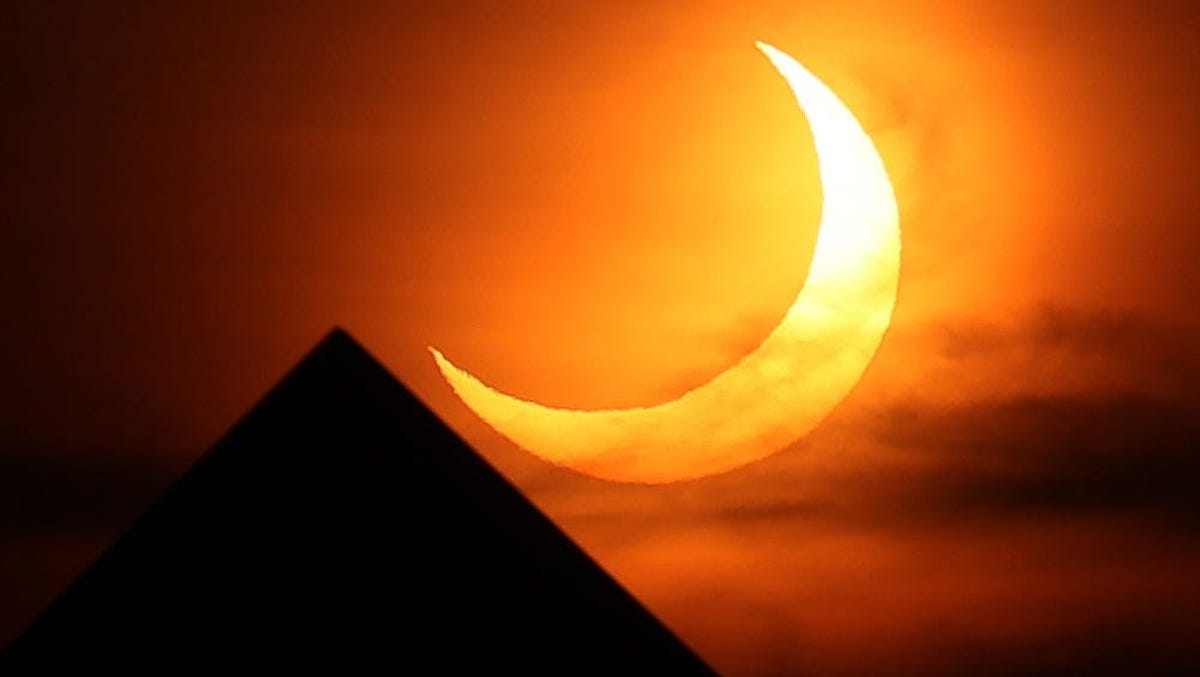Next Solar Eclipse Approaching: When to See the Annular ‘Ring of Fire’?
This year has offered some remarkable astronomical events, including the total solar eclipse on April 8, which gave millions of people in the U.S. a rare sighting of this cosmic occurrence.
According to NASA, another total solar eclipse like the one in April won’t be visible from the contiguous United States for the next 20 years, with the next date being noted as Aug. 23, 2044. However, that eclipse will not cover as wide an area of the U.S. as the 2024 event did.
Fortunately, there are still many celestial events on the horizon in the coming years, including a few scheduled to take place before this year concludes. One such spectacle is the annular eclipse, commonly referred to as the “ring of fire,” which will happen in less than a month. This event will provide a unique perspective of the moon and sun from our planet’s position in space.
Here’s everything you need to know about the upcoming ring of fire eclipse.
What is the ring of fire solar eclipse?
The “ring of fire” refers to an annular solar eclipse, which occurs when the moon appears slightly smaller than the sun, partially covering the sun’s surface. This results in a bright ring of light around the silhouette of the moon, as explained by the Planetary Society. The thin line that surrounds the moon is known as an “annulus.”
Annular solar eclipses happen when the moon is at its farthest point from Earth during its orbit, causing it to appear smaller from our viewpoint.
When will the ring of fire solar eclipse take place?
The annular solar eclipse, or “ring of fire,” is set for Wednesday, Oct. 2.
The eclipse will unfold in several phases, as per data from Time and Date:
- 15:42 UTC: The partial eclipse starts. This phase occurs when the moon, sun, and Earth are not perfectly aligned, casting only the outer shadow of the moon on Earth.
- 16:50 UTC: The annular eclipse begins. At this moment, the moon moves between the Earth and the sun, creating the appearance of a thin ring of sunlight around the moon.
- 18:45 UTC: The maximum eclipse occurs, when the moon entirely covers the sun.
- 20:39 UTC: The annular eclipse concludes.
- 21:47: The partial eclipse ends.
Where can the solar eclipse be seen?
This solar eclipse will be visible from regions in South America, as well as parts of the Pacific and Atlantic Oceans, and Antarctica.
Approximately 175,000 individuals live within the path where the annularity will be visible, according to Time and Date. However, many more—about 245 million—will likely get a glimpse of the partial eclipse.
Countries in the southern region, such as parts of Argentina and Chile, will witness the annular eclipse in its full form.
In the U.S., only Hawaii is expected to offer a partial view of the eclipse on Oct. 2.
Other areas that may see at least a partial eclipse include:
- American Samoa
- Antarctica
- Bolivia
- Brazil
- Cook Islands
- Ecuador
- Falkland Islands
- Fiji
- French Polynesia
- Kiribati
- Mexico
- New Zealand
- Niue
- Paraguay
- Peru
- Pitcairn Islands
- Samoa
- South Georgia/Sandwich Islands
- Tokelau
- Tonga
- Tuvalu
- Uruguay
- Wallis and Futuna
How to view the ring of fire
The 2024 annular eclipse, which produces the ring of fire effect, will not be visible from the contiguous United States.
Nevertheless, a partial eclipse will be observable from Hawaii, starting around 6:10 a.m. Hawaii Standard Time (HST) and lasting until 7:57 a.m. HST.
Several cities in Hawaii will experience partial eclipse visibility on the morning of Oct. 2, with the following times (all times in HST, via Time and Date):
- Hilo – Viewable from 5:44 a.m. to 7:56 a.m.
- Honolulu – Viewable from 5:45 a.m. to 7:52 a.m.
- Kailua-Kona – Viewable from 5:44 a.m. to 7:56 a.m.
- Lihue – Viewable from 5:46 a.m. to 7:51 a.m.
- Napili–Honokowai – Viewable from 5:45 to 7:53 a.m.
- Wailuku – Viewable from 5:45 a.m. to 7:54 a.m.
- Waipahu – Viewable from 5:45 a.m. to 7:52 a.m.

